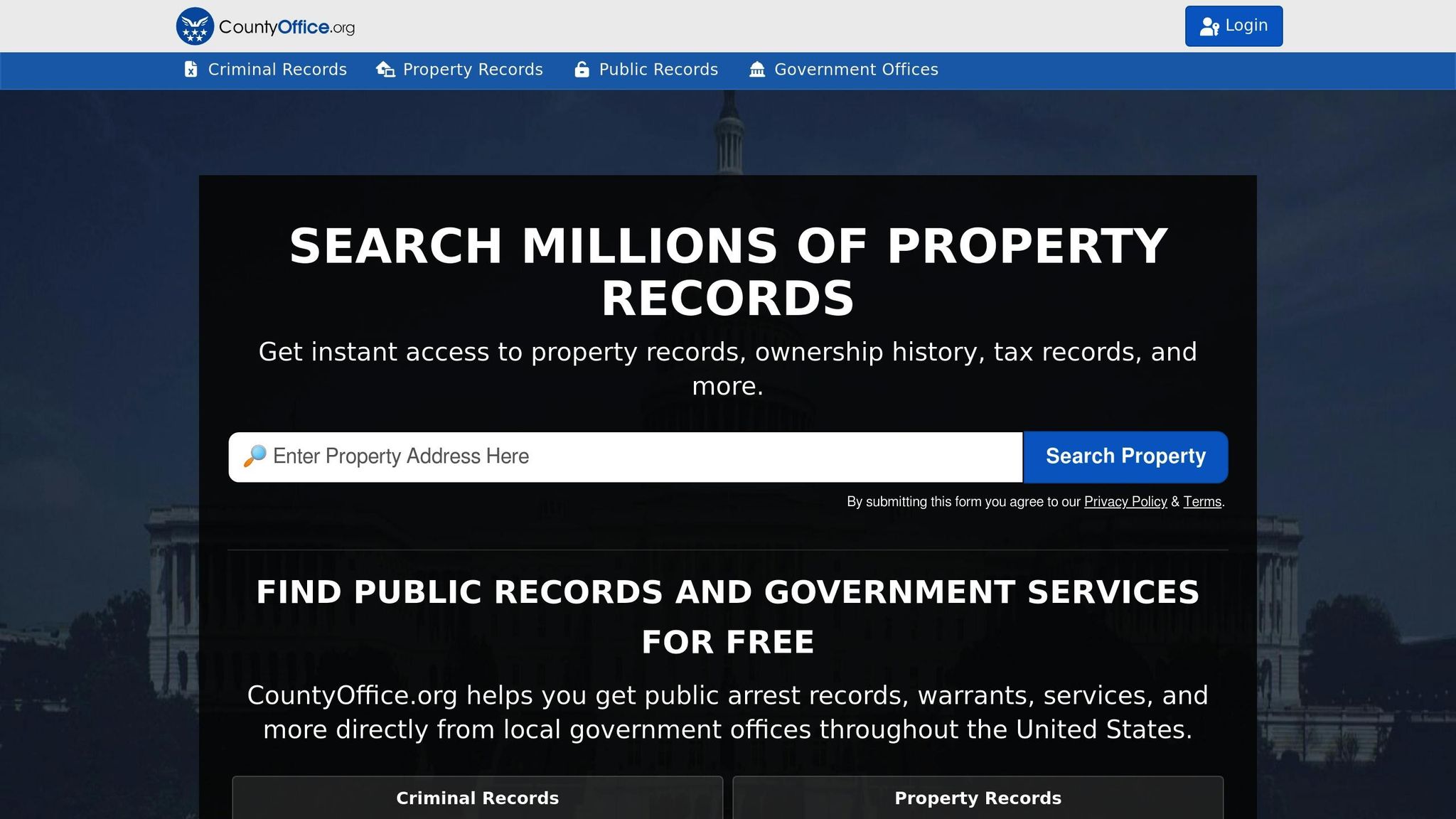How Hotlines Help Report Child Abuse
Child abuse hotlines provide a confidential way to report suspected abuse, ensuring rapid response to protect at-risk children.

Child abuse hotlines provide a direct, confidential way to report suspected abuse or neglect, ensuring children receive help as quickly as possible. These services are available 24/7, staffed by trained professionals who connect callers with child protection agencies. Anyone - parents, teachers, neighbors, or even children themselves - can use these hotlines to share concerns without needing concrete evidence. Reporting is both safe and protected by law, with anonymity guaranteed in most cases.
Key points:
- Who can call: Anyone with concerns about a child’s safety.
- What to prepare: Details about the child, the suspected abuser, and any observed incidents.
- How it works: Hotlines gather information and forward it to child protection services for investigation.
- Examples: The Childhelp National Child Abuse Hotline (800-422-4453) offers support in over 170 languages.
Hotlines are a critical first step in protecting at-risk children. If you suspect abuse, calling a hotline can initiate immediate action to safeguard a child’s well-being.
What Child Abuse Hotlines Are
Definition of Child Abuse Hotlines
Child abuse hotlines are confidential, round-the-clock services designed to handle reports of suspected child abuse or neglect. These hotlines ensure that reports are promptly directed to the appropriate child protection authorities.
Staffed by trained professionals, these hotlines operate 24/7 because abuse can happen at any time. Their role is twofold: gathering critical details about suspected abuse and connecting callers with the proper authorities for investigation and action. You don’t need to provide concrete evidence - reporting your suspicions is enough.
Who Can Use a Hotline
Hotlines are available to anyone - parents, relatives, neighbors, teachers, healthcare professionals, social workers, and even children themselves. If you suspect child abuse or neglect, you are legally obligated to report it. These hotlines are not just a tool but a civic duty.
Good-faith reporters are protected under the system. Your identity remains confidential and will only be disclosed to law enforcement or by court order. Additionally, individuals reporting in good faith are shielded from civil or criminal liability. If you’re unsure whether your concerns warrant a report, it’s better to call. As the Texas Department of Family and Protective Services advises, “If you are not sure whether to report, DFPS encourages you to call immediately and ask”.
National and Local Hotline Examples
The Childhelp National Child Abuse Hotline is available 24/7 at 800-422-4453. It offers services in over 170 languages and maintains a resource database with over 10,000 national, local, and international contacts.
"Our counselors are available 24/7 to answer questions, provide resources & support, and talk through difficult situations." – Childhelp National Child Abuse Hotline
This hotline provides crisis intervention, information, and referrals to emergency services, social support, and other resources [3]. You can also text HELP to 800-422-4453. While the Childhelp hotline offers guidance and support, it does not serve as a direct reporting line but can help you navigate the process of reporting child maltreatment.
Many states also operate their own hotlines linked directly to local child protective services. For instance, Texas runs the DFPS Texas Abuse Hotline at 1-800-252-5400. In fiscal year 2021, Texas Child Protective Services (CPS) conducted 157,159 investigations of suspected child abuse and neglect, confirming abuse or neglect in 68,517 cases. Other examples include Tennessee’s reporting line at 877-237-0004 and Arizona’s toll-free number at 888-767-2445, which also offers online reporting for non-emergency cases.
If a child is in immediate danger, call 911 first. Afterward, follow up with the appropriate abuse hotline. For urgent cases requiring action within 24 hours, contact the Texas Abuse Hotline at 1-800-252-5400.
Next, let’s explore how to effectively report child abuse using these hotlines.
How to Report Child Abuse Using a Hotline
Information to Prepare Before Calling
Having the right details ready can make your report more effective, even if you don’t have every piece of information. Every bit helps when it comes to protecting a child.
Start with basic information about the child and their family, such as names, ages or birth dates, and their current address. Include where the child is now, their condition, and whether they are alone, need medical assistance, or are in immediate danger.
Write down specifics about the situation - dates, times, descriptions of incidents, visible injuries, or other dangers you’ve observed. If the child has spoken to you about the abuse, note their exact words.
You’ll also need information about the suspected abuser. Include their name, relationship to the child, whether they currently have access to the child, and any other relevant details. If there are witnesses, gather their names and contact information. Note any physical evidence or if other services are already involved.
If you wish to remain anonymous, make that clear when you call. It’s also helpful to consider any cultural factors that might provide context for the family’s situation.
Once you have these details, you’re ready to make the call.
Making the Call: Best Practices
If the child is in immediate danger, call 911 without delay. For non-emergencies, find your local child abuse hotline by searching online or checking a phone directory.
When speaking to hotline staff, stay calm and stick to the facts. Clearly describe what you’ve observed without exaggeration. Be mindful of any potential biases or cultural differences that could affect your interpretation of what you’ve seen or heard.
Remember, filing a report is not an accusation - it’s a way to express concern and request a professional investigation. Be ready to share details like your relationship to the child, information about the suspected abuser (e.g., name, address, or even a license plate number), and contact details for the child’s parents. Explain the type of abuse you suspect, why you suspect it, when it occurred, and the child’s current location and safety.
Do not confront the suspected abuser directly. This could escalate the situation and interfere with investigations. Focus on providing accurate information to the professionals trained to handle these cases.
It’s worth noting that every state has laws protecting those who report abuse in good faith, shielding them from lawsuits or penalties.
What Happens After You File a Report
Once your report is filed, child protection authorities act quickly to ensure the child’s safety. In some states, like California, you may need to follow up your call with a written report to the appropriate child welfare agency. The hotline will forward your report to Child Protective Services (CPS) or law enforcement for further investigation.
Your identity will remain confidential throughout the process. Typically, details about the reporter are shared only with law enforcement or by court order. Those who report in good faith are protected from civil or criminal liability.
If the situation persists, you should continue to report each new incident separately. Encourage other witnesses to report their observations as well - multiple reports can give investigators a fuller picture of what’s happening.
CPS investigators will evaluate the child’s safety, interview family members, and decide what services or interventions are needed. The process may vary depending on state laws and the complexity of the case, but your report sets critical steps into motion to protect the child and support the family.
While confidentiality laws prevent updates on the outcome of your report, rest assured that your call has initiated vital safety measures for a child in need.
Hotlines vs. Other Reporting Methods
Comparison of Reporting Methods
Different reporting methods come with their own set of strengths and challenges, which influence how effectively and quickly a child at risk can be protected.
| Reporting Method | Advantages | Disadvantages |
|---|---|---|
| Hotline (Phone) | Available 24/7, immediate response, real-time guidance from trained professionals, fully confidential | Requires clear verbal communication |
| Online Form | Allows written documentation, submission of photos or evidence, time to organize thoughts | May not be monitored continuously, slower response times, lacks personal interaction |
| In-Person Reporting | Face-to-face communication, ability to clarify complex situations, personal connection with intake staff | Can feel intimidating, requires travel, possible waiting times |
Hotlines stand out because they offer immediate access to support and resources. For example, the Childhelp National Child Abuse Hotline provides services in over 170 languages and has a database of more than 10,000 resources spanning national, local, and international levels.
Online reporting is particularly useful when you have physical evidence, like photos or documents, to submit. Many state child protective services now offer web-based systems that allow you to upload files and provide detailed accounts. However, these systems often aren't monitored 24/7, which can delay responses in urgent cases.
In-person reporting is a good choice when detailed discussions are necessary, such as for mandated reporters like teachers or healthcare workers. It allows for immediate clarification of complex details but may require more effort to coordinate and can feel daunting for some individuals.
Why Hotlines Are Often the Best Option
Hotlines emerge as a top choice for reporting due to their accessibility and expert intervention. David Sanders, Ph.D., EVP of Systems Improvement at Casey Family Programs, highlights their importance:
"Hotline systems are the first point of contact between the public and the child protection agency."
Hotlines are invaluable in emergencies because they provide instant access to trained professionals. Unlike online forms that might sit unmonitored or in-person reporting that requires scheduling, hotlines connect you immediately with experts who can assess the situation and guide you on the next steps.
Another key advantage is expert crisis intervention. Hotline staff undergo specialized training in areas like trauma-informed practices, supportive listening, and crisis management. This ensures that callers not only receive practical advice but also emotional support during what is often a highly stressful time.
Hotlines also benefit from standardized screening protocols. Most hotlines use centralized intake systems, which help ensure consistency and accountability in decision-making. This approach often results in faster and more reliable protective actions compared to local intake systems.
Confidentiality and safety are additional reasons why hotlines are so effective. The Childhelp National Child Abuse Hotline describes its environment as:
"A safe, nonjudgmental and inclusive space for those concerned about or affected by child abuse."
This level of privacy can encourage individuals to report concerns without fear of judgment or exposure, which is especially important in sensitive situations.
The impact of hotlines is evident in statistics. During the COVID-19 pandemic, one national child abuse hotline saw a 13.75% increase in inquiries compared to the previous year, highlighting the critical role phone reporting plays in times of crisis. With over 7.8 million children involved in abuse or neglect reports annually in the U.S., hotlines serve as a vital lifeline for vulnerable children.
In urgent cases, hotlines can also coordinate directly with emergency services. If a child is in immediate danger, operators can connect with 911 while ensuring the report is integrated into the child welfare system. This ability to act swiftly and effectively makes hotlines an indispensable tool in protecting at-risk children.
How Do Child Abuse Hotlines Work? - CountyOffice.org

Conclusion: How Child Abuse Hotlines Save Lives
Child abuse hotlines play a vital role in protecting at-risk children across the United States. With over 2,000 children losing their lives each year due to abuse or neglect, as reported by the National Center on Child Abuse and Neglect, these services provide essential intervention that can literally save lives.
Available around the clock, hotlines connect callers with trained counselors who can step in early to prevent long-term harm. The Childhelp National Child Abuse Hotline captures the importance of taking action with their powerful message:
"Your story could save a life."
Beyond immediate intervention, these hotlines benefit from the support of nonprofits and community programs. Organizations using platforms like HelpYouSponsor can amplify awareness by incorporating hotline resources into sponsorship programs and donor outreach. By leveraging donor management tools, nonprofits can share hotline information, track how communities engage with child protection initiatives, and measure the success of their awareness efforts.
While these collective efforts are impactful, individual actions remain just as crucial. If you suspect abuse, act immediately - call a hotline or dial 911 if a child is in immediate danger. Even a single call can safeguard a child, support a family in crisis, and save a life.
These hotlines don’t just respond to emergencies - they work to prevent them by ensuring children and families receive timely support and fostering greater community awareness.
FAQs
How do child abuse hotlines protect the caller's identity?
Child abuse hotlines prioritize confidentiality, offering a secure way to report abuse anonymously. This means you can share critical information without disclosing your identity to the family or anyone involved.
Staff members at these hotlines follow strict protocols and receive specialized training to protect your privacy. Any identifying details you provide are only shared if legally mandated or with your clear consent. This system is designed to foster a sense of safety, encouraging people to voice their concerns without the fear of being exposed.
What should I do if I’m unsure whether to report suspected child abuse?
If you're unsure whether your observations of a child point to abuse or neglect, the safest step is to contact a child abuse hotline or your local child protective services. These experts are equipped to listen to your concerns, assess the situation, and decide if further action is needed.
When you make the call, try to provide as many specifics as you can - dates, times, and any context that might be relevant. Even if you're not completely certain, it's always better to report your concerns. Trained professionals can evaluate the details and take the necessary steps to protect the child.
How do child abuse hotlines work with local child protection services to keep children safe?
Child abuse hotlines play an essential role in safeguarding children by collaborating closely with local child protection services (CPS). When someone makes a report, the hotline gathers detailed information about the situation and passes it along to CPS or a similar agency to take the next steps.
CPS reviews the report and often consults with professionals who know the child’s circumstances, such as teachers or healthcare providers. Based on this evaluation, CPS decides on the most appropriate action. This could involve offering family support services or, in extreme situations, removing the child from a harmful environment. The ultimate priority is always the child’s safety and well-being.

